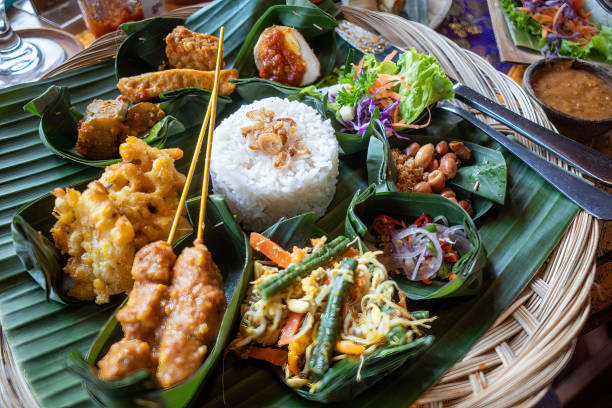"Journey Through the Vibrant Flavors of Indonesian Cuisine"
Indonesia, a scenic archipelago with over 17,000 islands, is also a melting pot of diverse food cultures. The diverse Indonesian cuisine, with its bold flavors and vibrant dishes, is a reflection of the country's multicultural heritage, influenced by a myriad of cultures ranging from Indian, Chinese, Middle Eastern to European.

The Indonesian Culinary Landscape
Indonesia’s culinary landscape is as diverse as its geography. Each of its islands has a unique culinary identity. The staple food varies from island to island - while rice is preferred in most regions, certain areas like Papua and Maluku favor sago and sweet potato. Influences from neighboring countries like India, China, and the Middle East have also shaped the flavors and cooking techniques.
A Cornucopia of Spices
Indonesian cuisine is known for its characteristic use of a myriad of spices. The country’s rich history as a spice trade hub has left a lasting impact on its cuisine. Commonly used spices include turmeric, ginger, galangal, coriander, and lemongrass, which lend a distinct aroma and flavor to the dishes.
Signature Dishes
One of the most popular Indonesian dishes is Nasi Goreng, a flavorful fried rice dish with a mix of sweet, salty, and spicy flavors. Rendang, a slow-cooked beef curry from the Minangkabau region, is another must-try dish. Satay, skewered and grilled meat served with a peanut sauce, is a favorite street food.
Innovative Indonesian Drinks
Indonesia is not just about food; it also offers an array of unique beverages. Bandrek, a warm, spicy and sweet drink made from ginger and palm sugar, is a comforting drink during the rainy season. Es Teler, a colorful dessert drink made of avocado, coconut, and jackfruit, is a refreshing summer delight.
Tips and Facts about Indonesian Cuisine
- The term ‘Pedas’ on a menu means the dish is spicy.
- Indonesian cuisine often uses ‘Kecap Manis’, a sweet soy sauce, as a condiment.
- ‘Bakso’, Indonesian meatballs, are a popular street food.
- ‘Tempe’, a fermented soybean cake, is a common protein source in Indonesian vegetarian dishes.
In conclusion, Indonesian cuisine, with its rich flavors and diverse dishes, offers a unique culinary experience. Its eclectic mix of spices, innovative cooking techniques, and unique beverages make it a must-try for every food enthusiast. Whether you’re a fan of spicy foods, sweet desserts, or refreshing drinks, Indonesian cuisine has something to offer for everyone. So next time you’re exploring new food cultures, don’t forget to delve into the vibrant world of Indonesian cuisine.






